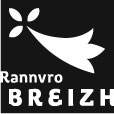Almost all the lanthanides are luminescent, but in various wavelength ranges and with very different intensities.
_________________________________________________________________________
Quantum yield measurement
The Qy value gives the number of photons emitted by a sample divided by the number of photons absorbed by this same sample. We measure it in an integration sphere with a spectrophotometer.
We are often surprised by Qy values, because it is not an absolute measurement of the light emitted by the sample: the number of emitted photons is divided by the number of absorbed photons, not by that of the received ones. So, some compounds with a weak UV absorption may present a weak light emission but a high quantum yield.
In order to evaluate the absolute light emission properties of a luminophore, we use a fluxmeter to measure the UV light received on the surface (irradiance: W/cm²) and a lumenmeter to measure the visible light emitted by the surface (luminance: cd/cm²). After conversion of candelas in lumens (related to the 3D geometry of the measurement), the ratio of lm/W (i.e. luminous efficacy) can be compared with every other light emitting device (for example a commercial source of light).















